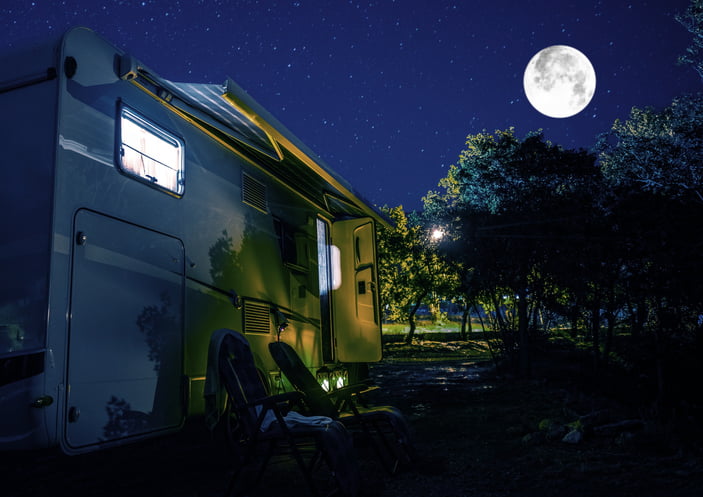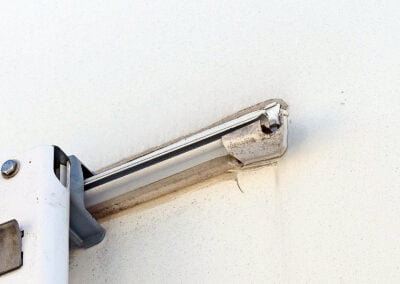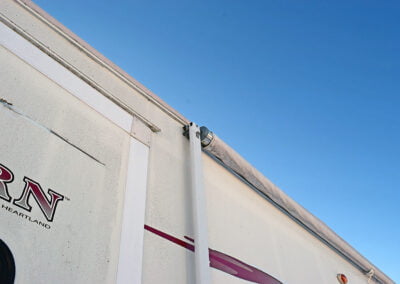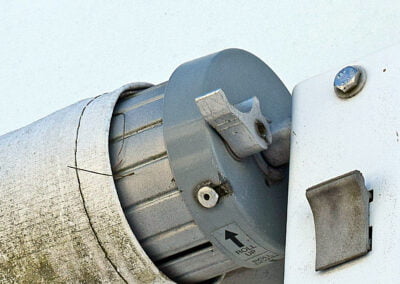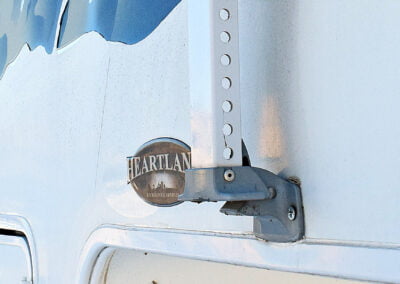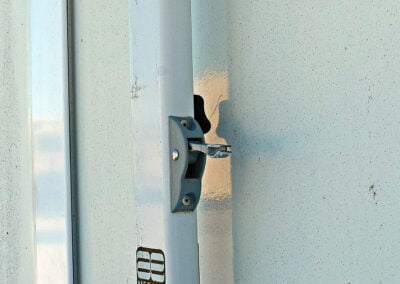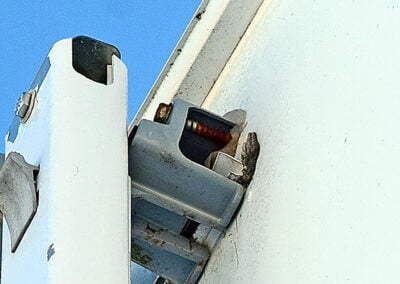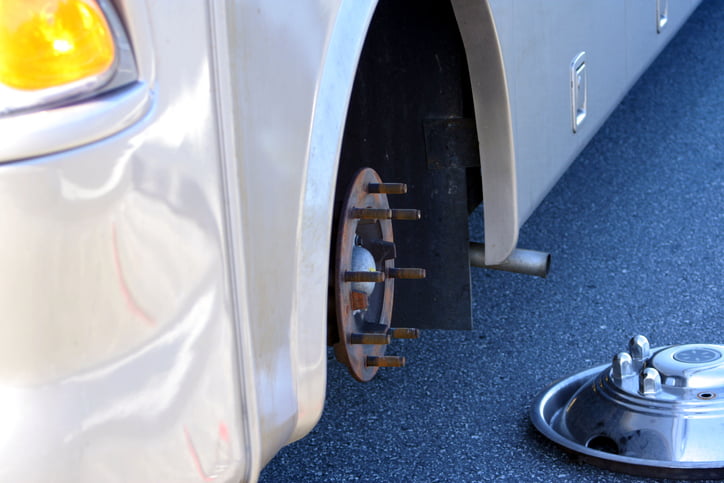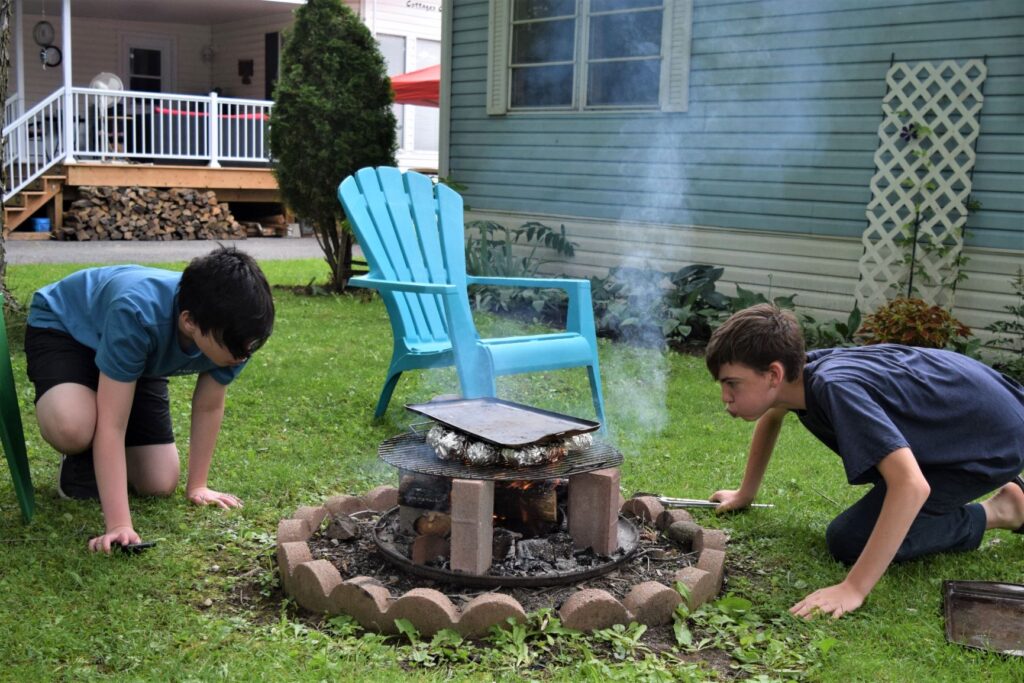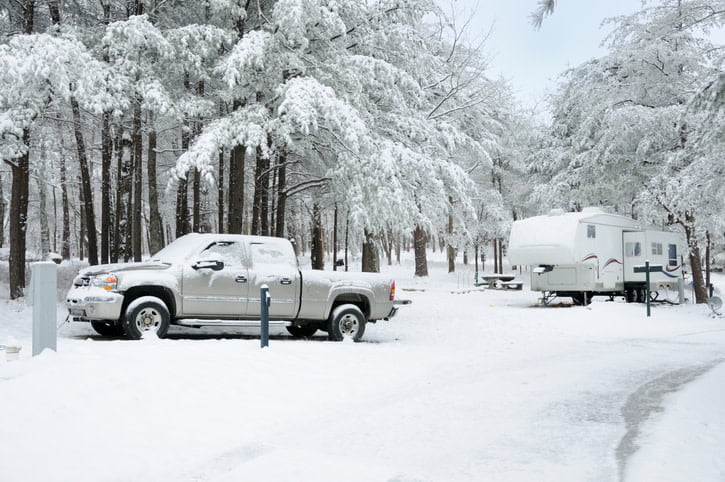It was the first day of November when we crossed the USA-Mexico border at Nogales south of Tucson. Six rigs in a small caravan, driving into Mexico. Five couples and Janice on her own with her dog.
About two hours after crossing the border, we watched in horror as the event unfolded with the RV in front of us. We were driving in strong side winds through a remote high mountain pass in Mexico. Janice’s patio awning started to unroll and tear on the rig in front of us. The effect of the wind force nearly pulled her rig off the road.
Before the Incident: Tucson, Arizona
At the Caravan meeting campground, south of Tucson, Arizona, we learned that our wagon master had broken down in Vancouver, BC, and could not join the caravan. She was to lead us into Mexico.
John, the original caravan tail-gunner, consented to lead if Linda and I agreed to act as the new tail-gunners.
The six RVs had met and formed a caravan to drive from Tucson, Arizona, USA, to La Penita, Nayarit, Mexico. Once at the campground at La Penita, we would be spending November to March there.
Impossible to Stay Together at the Border
Confusion of the drivers’ was visible at the border as our drivers tried to read the Spanish signs. Hundreds of trucks crowded the roads making manoeuvring difficult and staying together impossible.
Individually, we made it across the border and to the agreed meeting point at the first Pemex gas station on the road south. Here, just inside Mexico, we reformed our caravan.
Being stationary at the Pemex gas station was a happy moment for the group. We had now crossed the border and driven on the distinctly different Mexican roads through Nogales. Last night, the excitement around the campfire had been intense, a mixture of fear and anticipation of this moment.
All Happy and Smiling
Kilometre 21 south of the border is the customs inspection stop. At the inspection stop, we were all out of our rigs. As we waited in line, completing the Mexican customs cards, everyone was happy and smiling; we were in Mexico!
Back on the toll road (Quota) Highway 15 going south, we headed towards our first campground as a caravan in Santa Anna, Sonora, Mexico.
Isolated villages have developed along this route. These villages have grown where they could find water. Small, lush green circles of cultivated ground surrounded these poor villages.
This area is a high desert of rock and dust. Highway 15, without crash barriers, runs between mountain ridges, brown and dusty, lacking vegetation. But our caravan members were confident that all was well, and we would reach the lush jungle, soft sandy beaches, and the Pacific Ocean’s warm water for the winter camping adventure. This certainty was evident from the chatter between rigs on the CB radio.
The Wind Pulled Janice’s Patio Awning Loose
The six rigs continued south in a cloud of dust. Dust raised from the road by our passing and carried off to the east by a strong wind. This wind pushed and tore at the passenger side of our rigs, finally pulling Janice’s patio awning loose.
Acting as a tail gunner, Janice’s old “Class A” motorhome was directly in front of our truck. From our vehicle, we watched the incident start to unfold. We were watching in horror as Janice fought to keep her RV on the road. The RV awning, now acting as a sail out over the roof, caught in the crosswind, pushed her RV into the oncoming lane while she fought to stay in lane and not drive over the ravine edge. In Mexico, few ravines have safety barriers.
Janice slowed and stopped on a grass verge on a sweeping bend. We pulled in behind, radioing the incident ahead to the Wagon Master and ran to help a badly shaken Janice.
All was well; we agree that the caravan should move on. We would stay behind and help secure Janice’s awning. We would all meet up for a drink at the campground that night.
Examination of Damage
Note: All the photos shown above were not taken at the time of damage. They’re just reference points to the areas being discussed.
- The awning was torn in several places for about one metre from the front awning support arm.
- The wind had bent the front roller support arm.
- The rear manual locking clamps on each arm were loose. The worn latch moved freely. It was challenging to say if they became slack due to the incident or were not tight beforehand.
- The roller locking latch mechanism high off the ground is a manually operated mechanical switch. This mechanism allows the roller to open or close, preventing accidental operation. An initial examination from the roof indicated that this latch was loose and easy to switch from one position to another. This slackness in the mechanism suggested aged and worn internal components. Its condition may have contributed to the incident.
- While on the roof, it was easy to see that the mounting bolts for securing the top of the front roller arm bracket to the vehicle were loose and rusty. They should not have been rusty. It appeared as if water was getting down the bolts and rotting the wood inside the wall. The original stainless steel bolts would not have rusted and would have been better sealed. Examination suggested that this bracket was a poorly thought-out historic installation. These bolts had probably been loose for some time and may have provided the initial movement that helped the latches open.
Securing the Patio Frame and Awning
- Cut the canvas off where it is attached to the attachment rail on the side of the Motorhome.
- Roll the canvas onto the roller, and secured it with duct tape.
- Aligned the roller support arms by bending—taped both parts together.
- Used duct tape to secure the top and middle sections of the support arms.
- Duct-taped the roller locking latch closed.
- Cleaned the roller support arm top mounting bracket bolts, wrapped the bolts in PVC pipe thread tape, and reinstalled. The pipe tape addition acted as a wall plug, provided additional grip on the damaged bodywork, and held until we reached La Penita.
- Used rope to tie each end of the roller to the air-conditioning roof unit.
- Checked the roller was secure twice a day until we reached La Penita.
Tools Required for Roadside Repair
- Eight-foot ladder
- Adjustable wrench
- Flathead ten-inch screwdriver
- Sharp knife
- Rope
- Duct tape
- PVC pipe thread tape
Conclusion
The root cause was likely the rusting mounting bolts allowing water into the interior wooden frame, causing the wood to decay and the bolts to work loose. The high wind and rough roads would have caused movement in the awning system, and the worn latching mechanisms and insecure bolts allowed the roller tube to unwind.
The awning canvas then caught in the wind and acted as a sail.
The patio awning framework, roller, and canvas were beyond repair. We decided to secure the patio awning to the vehicle until Janice could get an insurance adjuster to come out and see it.
Janice contacted her insurance, and they agreed to inspect it when she reached the La Penita campground, providing she made the awning assembly safe and secure before driving on, which she did.
The patio awning mechanism is a simple system to ignore. Yet its failure could have deadly consequences.
Inspect your awning system regularly and know how the latches work.

